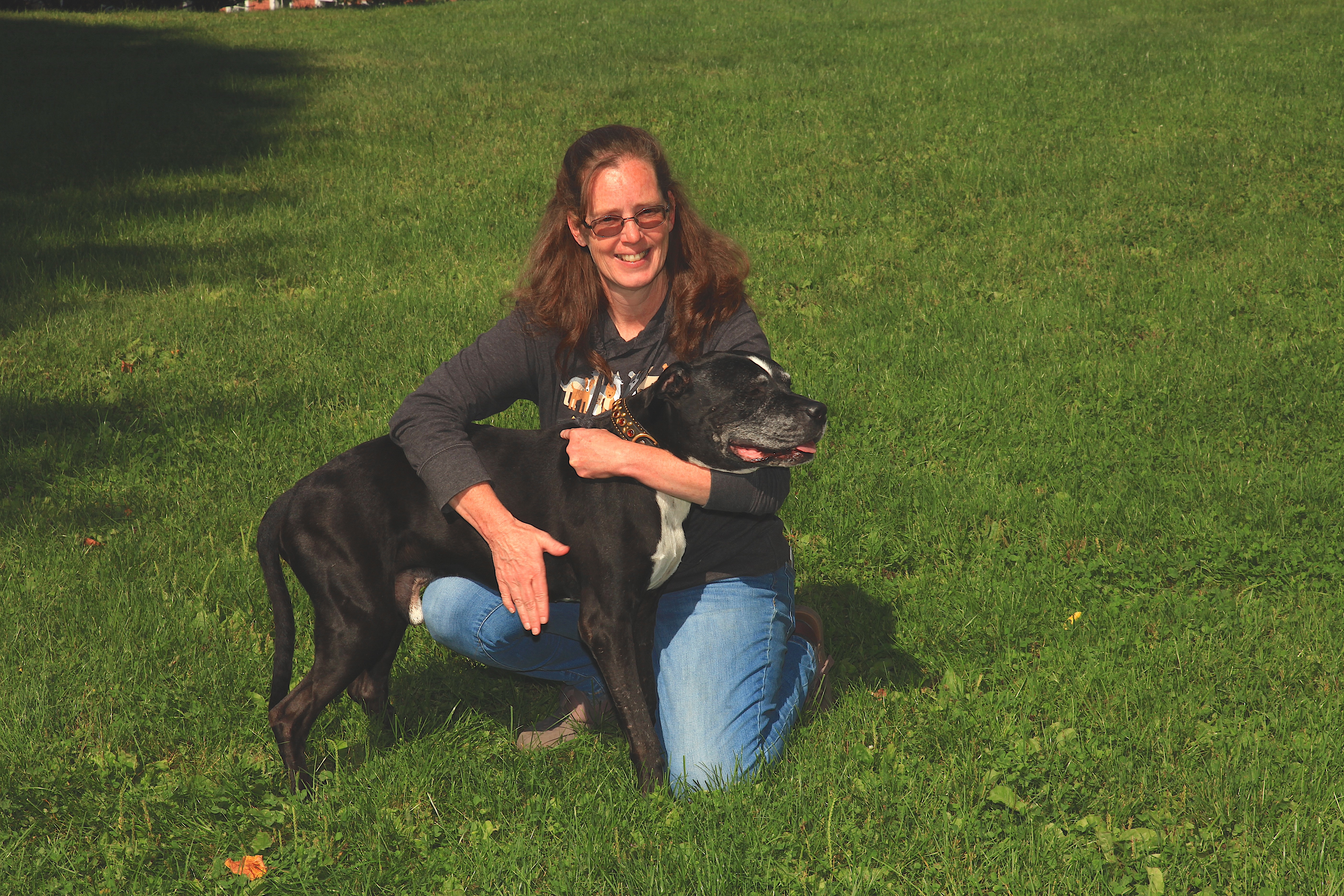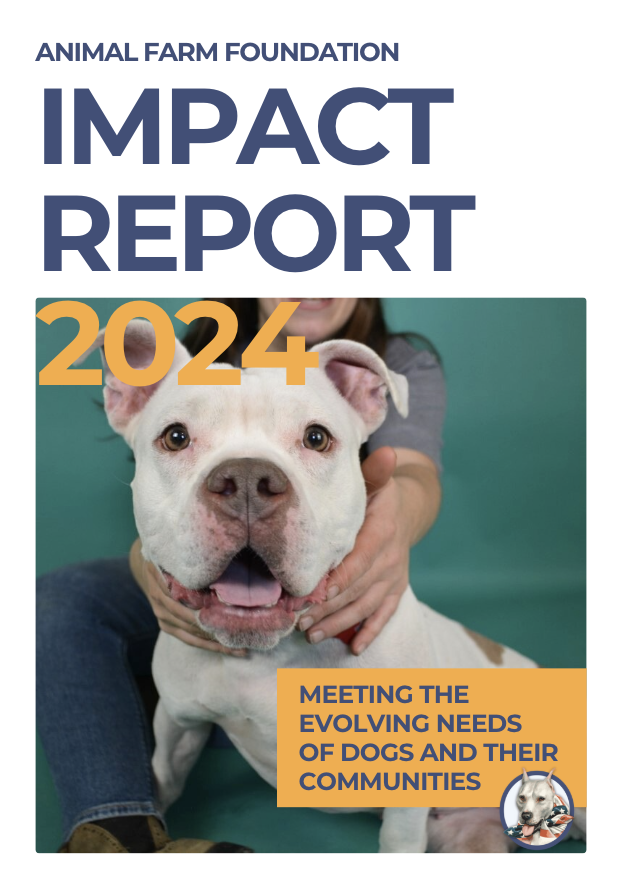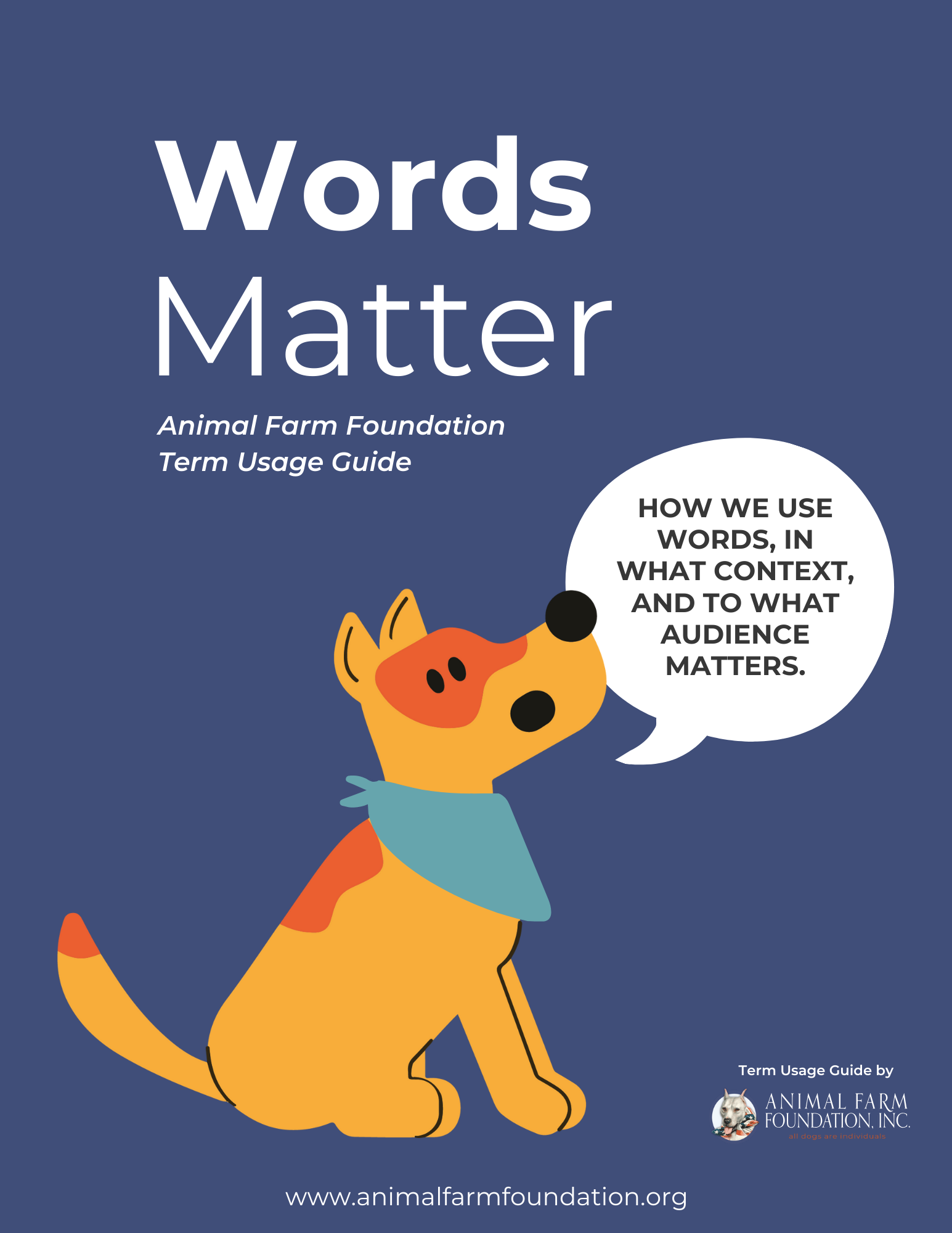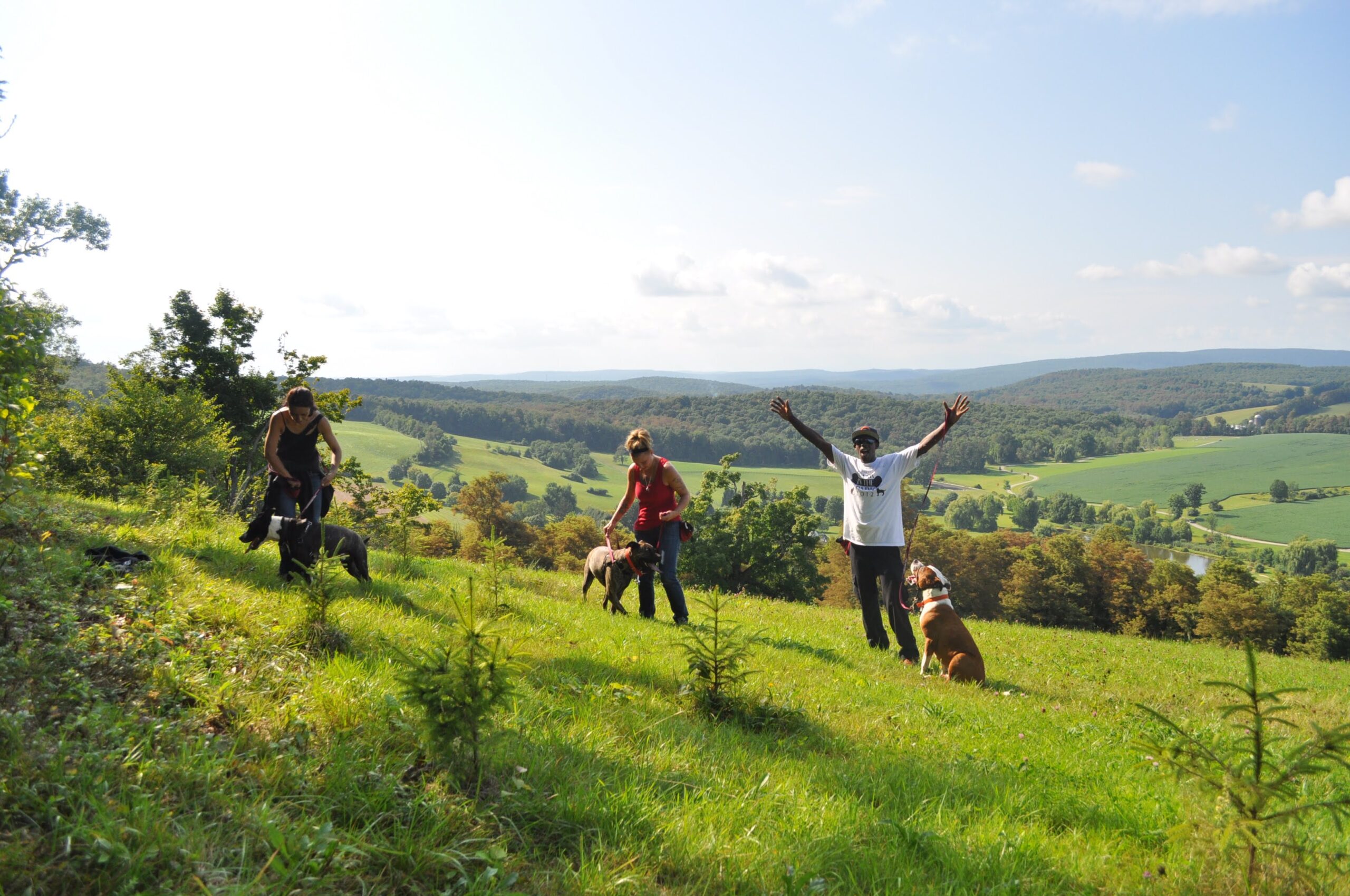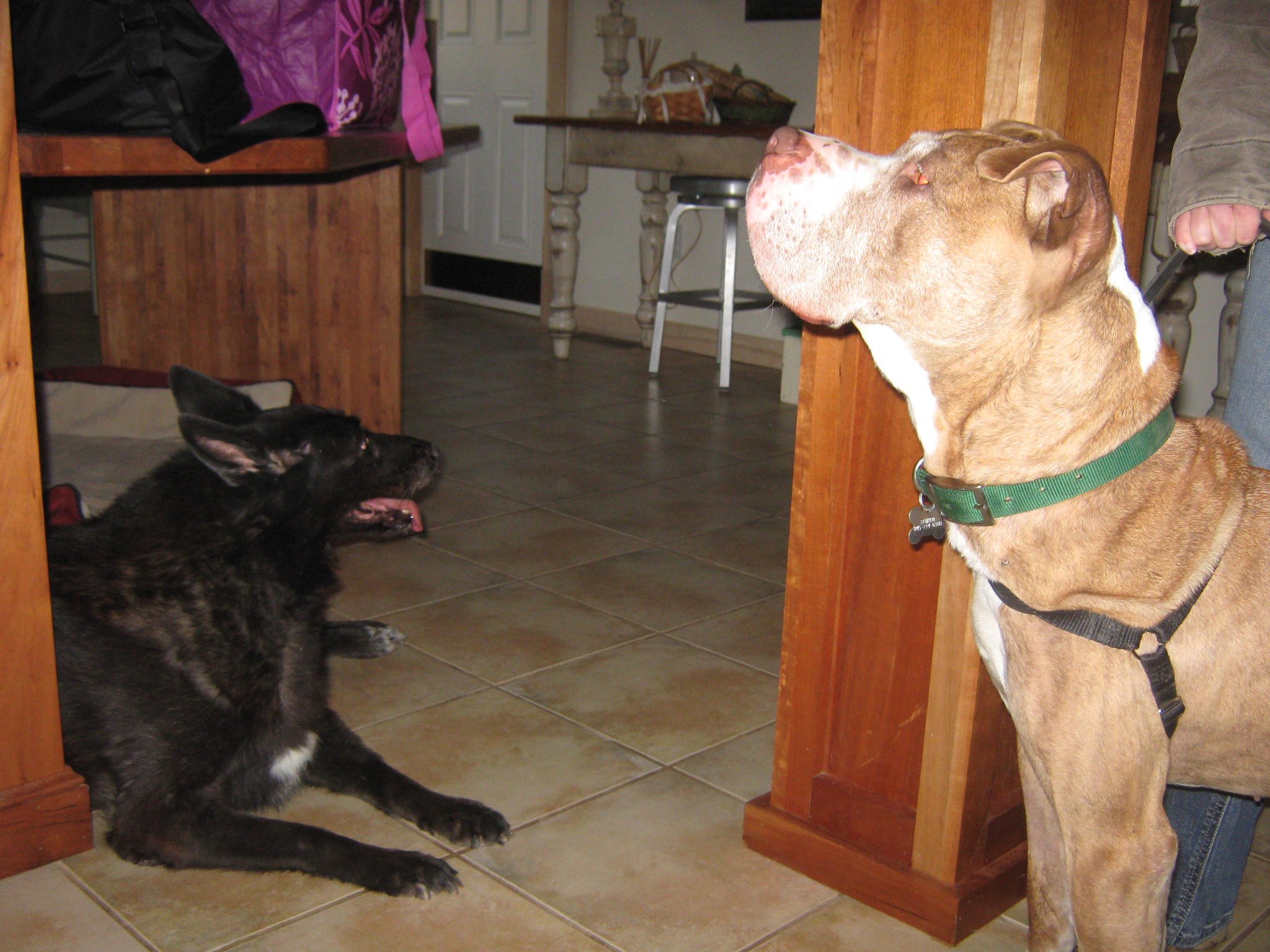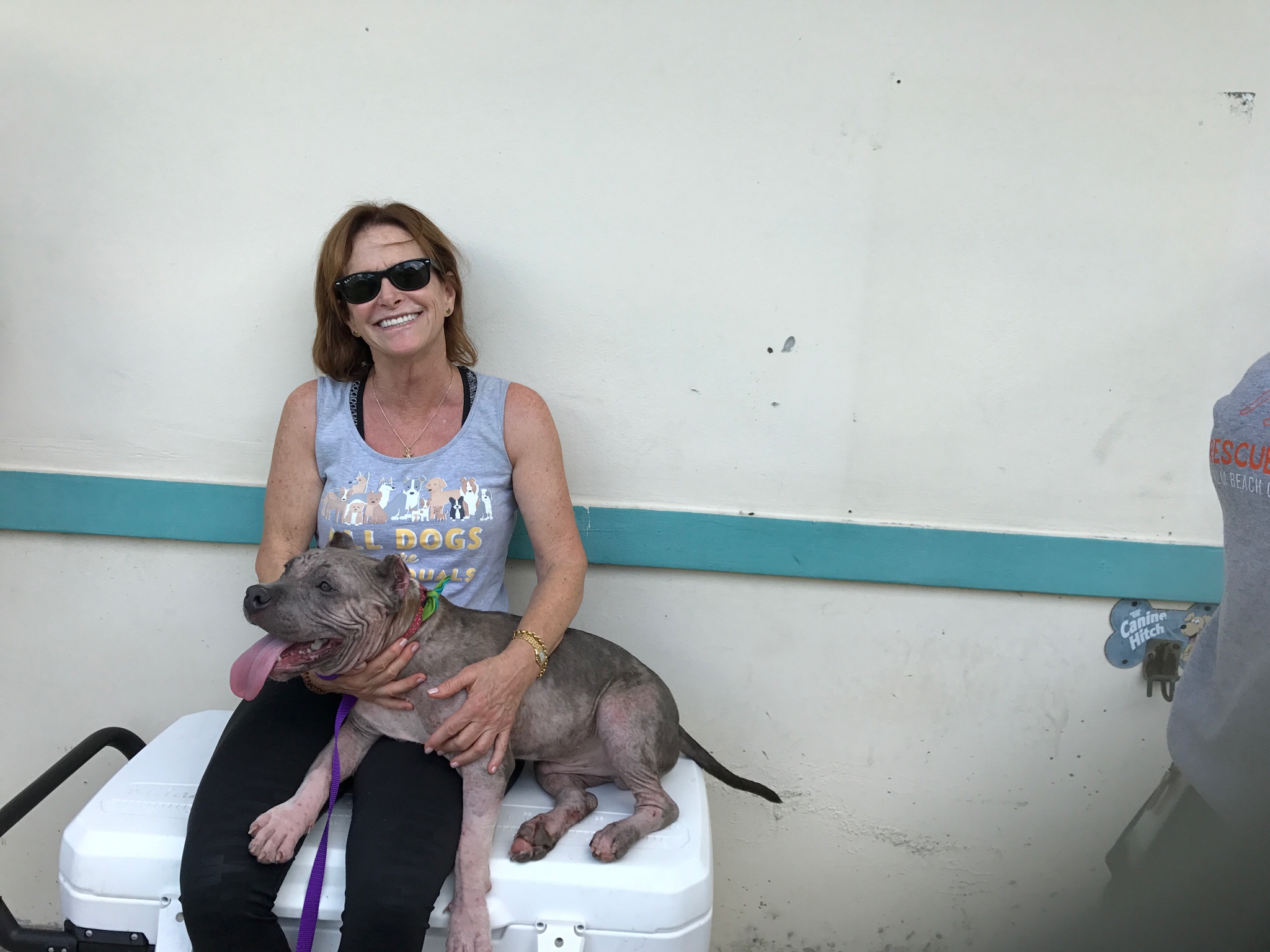This is a guest post by Kelly Duer and Kristen Auerbach.
In our work in Austin, Texas and Fairfax, Virginia, our main goal has been reducing the length of shelter stay for medium and large dogs. We know the longer they’re in the shelter, the more likely it is that the stress associated with being confined to a cage for 23 hours or more a day will negatively affect their behavior.
Consequently, the longer a dog is in a shelter, the less likely people might be to adopt them. The better your adoption marketing, the faster you can save lives through adoption.

The traditional marketing methods most shelters use for their dogs can be boring and repetitive. It’s usually the same standard pet biographies, consisting of blanket statements like, “loves to cuddle” and “lots of energy!” These statements are too generic to tell you much about the dog’s personality. Often, they are based solely off of behavior in a high-stress, kennel environment.

You don’t need special skills or money to embrace innovative, internet savvy marketing. You just need to retrain your brain and let go of the traditional shelter dog marketing you’re used to.
Here Are a Few Mistakes We See Over and Over Again:
Posting the Same Picture More Than Once.
People are less likely to engage with something they’ve already seen, no matter how cute it is. Share different photos of the dogs in your care, and if you’re promoting a specific event, change things up with different copy and an alternate picture for each post.

Poor Photo Quality
You don’t like to look at blurry, dark, pixelated, or mediocre photos, and neither do potential adopters. They’re an immediate barrier and make it difficult for people to connect with an animal.
Strict Rules to Govern Social Media
How many times have you heard shelters and rescues should limit their posts to one to two per day? Or only post certain types of stories, like adopted photos? These rules might prevent a lot of adoptions from happening. Change things up frequently. Focus on how impactful your content is, not whether or not you’re posting too much.
When in doubt listen to your audience. Focus on what they respond to and don’t be afraid to try new things.

Using the Same Template Over and Over
Remember, people don’t like to be bored. Using the same text format for each post gets old after a while. Try new ways to create emotional connections. All dogs are individuals, and so are all social media posts!
Putting Stop Signs in Your Posts
Putting qualifiers like, no kids and no other dogs in marketing often scares away potential adopters – even those who would actually be a good fit. Save adoption counseling for face-to-face interaction when you can put a dog’s needs into context.

Describing Dogs Using Generic ID Number
Pets don’t have generic ID numbers once they’re in a home and neither should the dogs in your care. The public doesn’t understand shelter ID numbers and they certainly don’t create an emotional connection with potential adopters. Give your dogs interesting names that, if possible, reflect their personality.
Posting without a Visual
It’s the internet! No one wants to read! Joking aside, that’s kind of the truth. Using a photo or video will give your posts more reach. Even if you’re posting general information about your shelter, you need an image. Every post you create is an opportunity to market an adoptable pet.
Here Are Some Examples of What We’re Talking About
*The organization used in our “don’t” examples is fictitious.
Here is Frodo. Although he has a great name, it appears alongside a generic identification number. There are also stop signs in his biography. Can you spot them?
Template text and a mediocre photo (left) make it difficult for supporters to form an emotional connection with Sweet Jane. A clear photo of her gazing into the lens (right) makes everyone feel like she is looking right at them, wanting them to take her home.
Need to post general shelter information, such as a change in hours for the holidays? Work an adoptable pet into the post for adoption marketing and give your information more reach at the same time!
What Makes Innovative Marketing Different?
Innovative marketing takes risks and breaks rules. It sees every animal as an individual and highlights every dog through sharing an adorable quirk, a story about their day, or a notable interaction with a person or other animal.
It avoids stop signs and doesn’t try to capture a dog’s entire personality in one post because we probably have no idea what the true personalities of any of our dogs are until they’re in a home with a family.

Innovative marketing also makes people feel something. It lets them see themselves in your posts by using community language like you, us, and we, not third person language like they and them.
But this blog isn’t about telling you, it’s about showing you, so check out a few of the ways we break the rules of traditional marketing to get more dogs sent to foster and adoptive homes faster!
Here’s How You Do It
- Make the dog a local celebrity
Posting every 5-10 days on the same dog creates an emotional attachment by letting supporters get to know him over time. The more people recognize and talk about an adoptable pet, the more likely it is that someone will adopt that dog. This also gets people talking about your shelter and the plight of long-stay pets in general.
After the Fairfax County Animal Shelter began posting regularly about French Fry’s car accident recovery, people began to recognize him while on outings with shelter volunteers. He was adopted by someone who had been following his progress on social media all along. His story helped the community to understand that the shelter is committed to lifesaving.
2. Write non-biographical posts
Is it even possible to capture a dog’s entire personality in one post? We think not, but supporters can make an emotional connection to a dog even if you’re only shining light on one aspect of it. Consider this post which focuses on Dalton’s intelligence:
This post generated dozens of inquiries from potential adopters and found Dalton his home.
3. Use first-person, instead of third person language
Make your supporters feel like a part of your organization by using relatable language. Speak with them the same way that you would talk with your friends– using you, us, and we– makes them feel included and valued.
The wording in the post on the left makes even long-time supporters feel like outsiders. Speaking in first-person (right) makes everyone feel included.
4. Post a lot
Can you post 4, 5 or more times a day? Sure, if you have great content!
When the shelter is full, the Austin Animal Center posts a minimum of every 2 hours in order to showcase as many adoptable animals as possible.
5. Tell a story
By posting regularly about one dog, you are telling the story of that dog’s time in the shelter’s care. The story’s climax is their adoption. Don’t forget to post their adoption photo and at least one update on life in their new home!
Ghost gained a loyal following on social media through frequent posting. As you can see, her adopters had been following her story for months. The shelter’s post of her adoption photo was a celebration that the whole community took part in by liking, commenting and sharing.
These strategies will put your pets on the fast track to adoption and cement your organization’s status as a lifesaving resource to your community.









